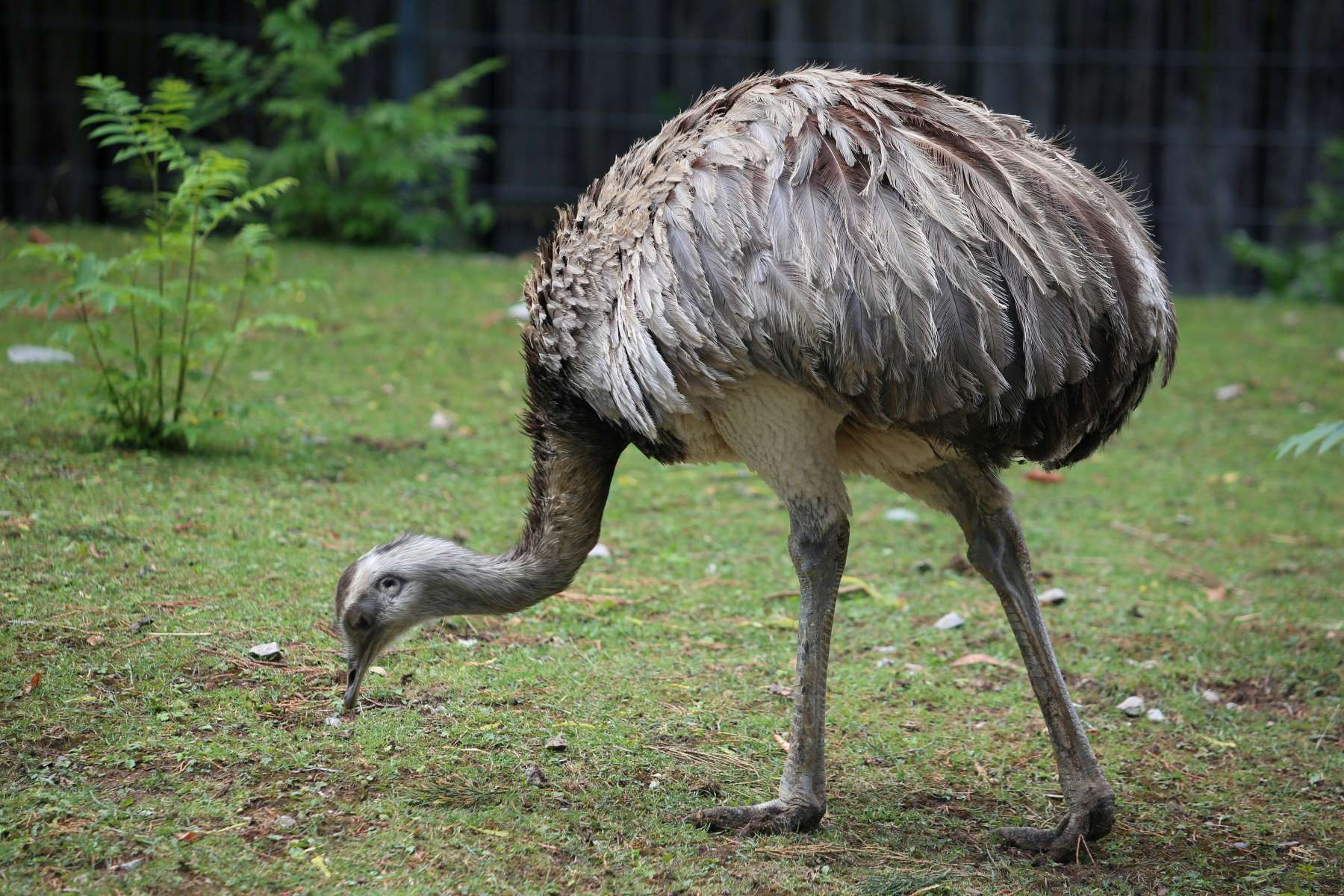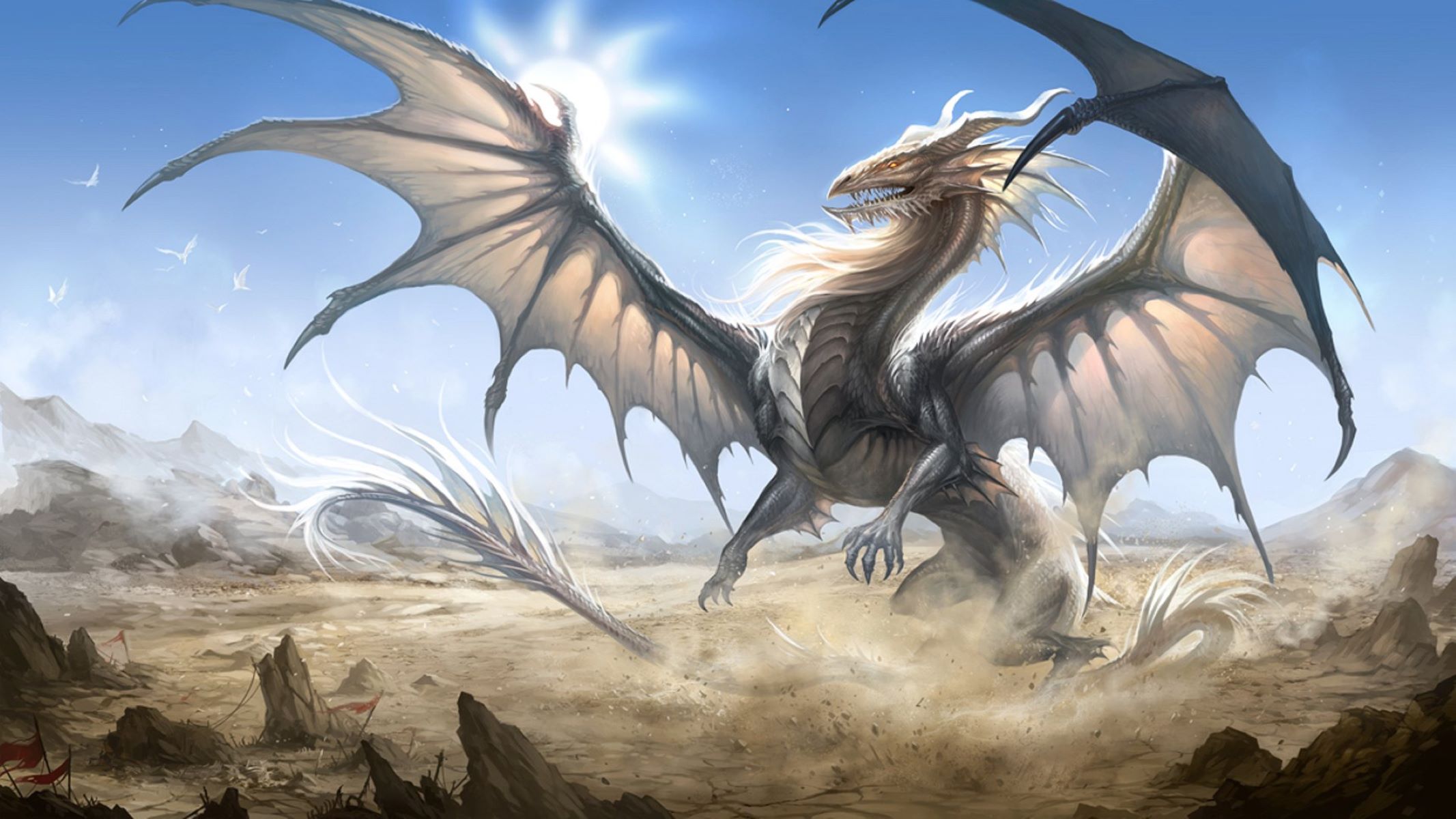Home>Pets & Animals>The Ultimate Guide To Ostriches, Emus, Rheas, And Cassowaries: Unveiling Their Fascinating Differences!


Pets & Animals
The Ultimate Guide To Ostriches, Emus, Rheas, And Cassowaries: Unveiling Their Fascinating Differences!
Published: January 24, 2024
Discover the intriguing differences between ostriches, emus, rheas, and cassowaries in this ultimate guide. Explore their unique traits and behaviors in the world of Pets & Animals!
(Many of the links in this article redirect to a specific reviewed product. Your purchase of these products through affiliate links helps to generate commission for Regretless.com, at no extra cost. Learn more)
Table of Contents
Introduction
Ostriches, emus, rheas, and cassowaries are among the most captivating and enigmatic birds on our planet. These flightless wonders hold a special place in the avian kingdom, each boasting unique traits and characteristics that set them apart from one another. From their distinct physical features to their diverse habitats and behaviors, these magnificent birds have intrigued and inspired humans for centuries.
While they share the commonality of being flightless, each of these birds possesses its own distinct charm and allure. The ostrich, known for its imposing size and powerful legs, stands as the largest and heaviest of all living birds. Emus, on the other hand, captivate with their endearing and inquisitive nature, coupled with their striking appearance. The rhea, native to South America, exudes elegance with its graceful stature and swift movements. Lastly, the cassowary, with its vibrant casque and vivid plumage, commands attention in the dense rainforests it calls home.
As we delve into the world of these remarkable birds, we will uncover the intricate details of their physical characteristics, delve into their unique habitats and distribution, explore their captivating behaviors and social structures, unravel their diverse diet and feeding habits, examine their reproduction and life cycles, and contemplate their conservation status. Moreover, we will shed light on the complex interactions between these birds and humans, highlighting the ways in which our lives intertwine with theirs.
With each section, we will unravel the mysteries and unveil the distinctiveness of these extraordinary birds, gaining a deeper understanding of their significance in the natural world. Join us on this enlightening journey as we unravel the fascinating differences that define ostriches, emus, rheas, and cassowaries, and gain a newfound appreciation for these awe-inspiring creatures.
Physical Characteristics
Ostrich
The ostrich, the largest and heaviest living bird, is renowned for its remarkable physical attributes. Standing tall with a distinctive long neck and large eyes, the ostrich boasts a striking appearance. Its powerful legs, adorned with formidable claws, enable it to reach impressive speeds, making it the fastest bird on land. The male ostrich displays striking black and white plumage, while the female's feathers are a more subdued grayish-brown. Notably, the ostrich's long eyelashes serve as protective shields against the harsh desert sands, exemplifying its remarkable adaptation to its arid habitat.
Emu
Emus, characterized by their soft, brown plumage and long, powerful legs, exude a unique charm. Their slender necks and small, vestigial wings contribute to their distinctive silhouette. With a height reaching up to six feet, emus stand as the second tallest birds globally, showcasing their impressive stature. Their keen eyes and inquisitive expressions add to their captivating allure, making them a sight to behold in their native Australian landscapes.
Rhea
The rhea, native to the grasslands and savannas of South America, possesses a regal appearance, distinguished by its long neck and legs. Its soft, elegant plumage, predominantly gray or brown in color, contributes to its graceful demeanor. The rhea's streamlined body and swift movements allow it to navigate its open habitat with ease, embodying a sense of natural poise and agility.
Cassowary
The cassowary, with its vibrant blue and purple neck and striking casque atop its head, stands out as a true marvel of the avian world. Its dense, black plumage, coupled with bright hues on its neck and wattles, creates a visually stunning contrast. The cassowary's robust legs, equipped with dagger-like claws, further accentuate its formidable presence, solidifying its status as a captivating and formidable creature in its lush rainforest habitat.
In summary, the physical characteristics of ostriches, emus, rheas, and cassowaries showcase the remarkable diversity and beauty present in the avian world. Each of these flightless birds possesses unique traits and features that contribute to their individual allure, captivating the hearts and minds of all who encounter them.
Habitat and Distribution
Ostrich
The ostrich, native to the expansive savannas and open woodlands of Africa, thrives in a variety of habitats, including semi-arid deserts and grasslands. Its adaptability allows it to inhabit diverse regions across the continent, from the Sahara Desert to the plains of the Serengeti. Ostriches are particularly prevalent in countries such as Kenya, Tanzania, and South Africa, where they roam vast expanses in search of food and suitable nesting sites. Their ability to withstand high temperatures and scarce water sources enables them to thrive in arid environments, solidifying their status as masters of the African plains.
Emu
Endemic to Australia, emus are found in a wide range of habitats, including eucalyptus forests, savannas, and coastal regions. They are particularly abundant in the grasslands and scrublands of the Australian outback, where they traverse vast distances in search of food and water. Emus have also adapted to human-altered landscapes, often venturing into agricultural areas in search of sustenance. Their resilience and ability to thrive in diverse environments have contributed to their widespread distribution across the Australian continent.
Rhea
Rheas, native to South America, inhabit a variety of habitats, including grasslands, scrublands, and open woodlands. They are commonly found in countries such as Brazil, Argentina, and Uruguay, where they navigate the vast expanses of the Pampas and Cerrado regions. Rheas exhibit remarkable adaptability, allowing them to thrive in both pristine natural habitats and human-modified landscapes. Their presence in a range of ecosystems underscores their significance as iconic birds of the South American continent.
Cassowary
The cassowary, a symbol of the lush rainforests of New Guinea and northeastern Australia, thrives in dense tropical environments characterized by dense vegetation and abundant rainfall. These elusive birds are primarily found in remote rainforest regions, where they play a vital role in maintaining the ecological balance of their habitats. Their distribution in these biodiverse ecosystems highlights their integral connection to the intricate web of life in the rainforests, where they contribute to seed dispersal and ecosystem health.
In essence, the habitat and distribution of ostriches, emus, rheas, and cassowaries exemplify their remarkable adaptability and resilience, showcasing their ability to thrive in diverse environments across the continents they call home.
Behavior and Social Structure
Ostrich
Ostriches are known for their complex social dynamics and intriguing behaviors. They exhibit a hierarchical social structure, with dominant males leading groups of females and their offspring. These groups, known as flocks, can consist of up to 50 birds, creating a sense of community and mutual protection. Ostriches are highly sociable creatures, engaging in elaborate courtship displays and vocalizations to communicate with one another. Their communal nesting sites, known as communal nests, further exemplify their social nature, as multiple females lay their eggs in a single nest, with the dominant female assuming the primary incubation duties. This cooperative breeding behavior underscores the intricate social bonds and cooperative instincts present within ostrich communities.
Emu
Emus, characterized by their inquisitive and curious nature, exhibit fascinating social behaviors. They are often found in small groups, known as mobs, where they engage in cooperative activities such as foraging and grooming. Emus communicate through a series of deep grunts and booming calls, creating a unique auditory landscape within their habitats. During the breeding season, male emus construct elaborate nests and take on the responsibility of incubating the eggs, showcasing their dedicated parental care. Emus are also known for their agility and speed, traits that contribute to their ability to navigate their environment and form cohesive social bonds within their groups.
Rhea
Rheas, with their elegant and swift movements, display a distinct social structure within their grassland habitats. They form loose flocks, often consisting of both males and females, and engage in coordinated activities such as foraging and vigilance. During the breeding season, males compete for the attention of females through elaborate courtship displays, showcasing their prowess and agility. The communal nature of rhea flocks highlights their cooperative instincts and the significance of social interactions in their daily lives. Additionally, rheas are known for their vocalizations, using a range of calls to communicate with one another and maintain social cohesion within their groups.
Cassowary
Cassowaries, despite their solitary nature, exhibit intriguing social behaviors within their rainforest habitats. They are primarily solitary birds, with males taking on the responsibility of incubating the eggs and caring for the chicks. However, they occasionally form brief associations during the mating season, engaging in courtship rituals and vocal displays. Cassowaries communicate through low-frequency booming calls, creating a unique acoustic environment within their lush habitats. Their interactions with other cassowaries, while limited, underscore the importance of social bonds and communication in their lives, contributing to the intricate dynamics of their rainforest communities.
In summary, the behavior and social structure of ostriches, emus, rheas, and cassowaries offer a glimpse into the captivating social dynamics and cooperative instincts present within these remarkable flightless birds. Their interactions and social behaviors underscore the depth of their connections with one another, shedding light on the intricate tapestry of their lives within their respective habitats.
Diet and Feeding Habits
Ostrich
Ostriches are omnivorous birds with a diverse diet that reflects their adaptability to various environments. Their primary food sources include seeds, roots, and leaves, supplemented by insects, lizards, and small mammals. Ostriches are adept foragers, using their keen eyesight and acute sense of smell to locate food in their arid habitats. Their powerful beaks and digestive systems enable them to efficiently process a wide range of food items, making them well-suited to thrive in the challenging conditions of the African savannas and deserts.
Emu
Emus are opportunistic feeders, consuming a varied diet that encompasses fruits, seeds, insects, and small vertebrates. Their foraging behavior is characterized by thorough exploration of their surroundings, using their agile beaks to probe the ground and extract food items. Emus are also known to ingest stones and pebbles, a behavior known as gastroliths, which aids in the mechanical breakdown of food in their digestive system. This unique adaptation allows them to extract maximum nutrition from their diverse diet, contributing to their resilience in the Australian outback.
Rhea
Rheas are herbivorous birds, primarily feeding on a diet of fruits, seeds, and plant matter. Their slender beaks and agile movements enable them to efficiently harvest food from the grasslands and shrublands they inhabit. While they predominantly consume plant-based fare, rheas also supplement their diet with insects and small invertebrates, showcasing their opportunistic feeding habits. This diverse diet allows them to thrive in their open habitats, where they play a vital role in seed dispersal and ecosystem health.
Cassowary
Cassowaries are frugivorous birds, relying heavily on a diet of fruits, berries, and seeds found in the lush rainforests they call home. Their distinctive casque, a helmet-like structure atop their heads, aids in navigating through dense vegetation and reaching for fruits high in the forest canopy. Cassowaries also play a crucial role in seed dispersal, as the undigested seeds they consume are dispersed across their expansive territories, contributing to the regeneration of the rainforest ecosystem. This specialized feeding behavior underscores their significance as keystone species in their tropical habitats.
In essence, the diet and feeding habits of ostriches, emus, rheas, and cassowaries reflect their remarkable adaptability and ecological significance. Their diverse diets and foraging behaviors contribute to the intricate balance of their respective ecosystems, highlighting the pivotal role they play in shaping the natural world around them.
Read more: The Ultimate Guide To Understanding Carnitas And Al Pastor: Unveiling The Delicious Differences
Reproduction and Life Cycle
Ostriches, emus, rheas, and cassowaries, despite their flightless nature, exhibit fascinating reproductive behaviors and life cycles that are integral to their survival and perpetuation as species. Each of these birds follows a distinct reproductive pattern, showcasing unique adaptations and strategies that contribute to their success in their respective habitats.
Ostrich
Ostriches engage in elaborate courtship rituals during the breeding season, with males displaying their vibrant plumage and performing intricate dances to attract females. Once a pair forms, the female selects a communal nesting site, where she lays her eggs alongside those of other females. This cooperative nesting behavior serves as a form of protection, as the communal nest provides camouflage and security for the eggs. The dominant female takes on the primary responsibility of incubating the eggs during the day, while the male assumes the night shift. This division of labor ensures the eggs receive constant care and protection. The incubation period spans approximately 42 to 46 days, after which the chicks hatch, ready to embark on their journey in the expansive African savannas.
Emu
Emus, known for their dedicated parental care, engage in a fascinating reproductive process. During the breeding season, male emus construct elaborate nests in which females lay their eggs before moving on to mate with other males. Once the eggs are laid, the male takes on the sole responsibility of incubation, abstaining from food and water for the duration of the incubation period, which lasts around 56 days. This remarkable display of paternal care ensures the survival of the offspring, as the male diligently tends to the eggs and, later, the hatchlings. The young emus, adorned with distinctive striped plumage, grow rapidly under the watchful eye of their father, gradually adapting to life in the Australian landscape.
Rhea
Rheas, characterized by their graceful courtship displays, exhibit a unique reproductive strategy within their grassland habitats. During the breeding season, males engage in spirited dances and vocalizations to attract females, showcasing their agility and prowess. Once a pair forms, the female lays her eggs in a shallow nest prepared by the male. The male then assumes the responsibility of incubating the eggs, a process that lasts approximately 40 days. This dedicated care allows the female to move on and mate with other males, contributing to the genetic diversity of the offspring. Upon hatching, the young rheas, adorned with downy plumage, venture into the grasslands under the vigilant protection of their father, setting the stage for their growth and development.
Cassowary
Cassowaries, solitary birds known for their striking appearance, follow a distinctive reproductive pattern within the dense rainforests they inhabit. During the breeding season, males engage in brief courtship displays, after which the female selects a suitable nesting site. Once the female lays her eggs, the male assumes the responsibility of incubating the clutch, which can consist of up to 8 eggs. The incubation period lasts approximately 50 days, during which the male diligently tends to the eggs, foregoing food and water. Upon hatching, the chicks, adorned with striped plumage, receive essential care from their father, gradually acclimating to the complexities of their rainforest habitat.
In essence, the reproduction and life cycles of ostriches, emus, rheas, and cassowaries offer a captivating glimpse into the intricate behaviors and adaptations that define these remarkable flightless birds. Their reproductive strategies and dedicated parental care contribute to the perpetuation of their species, underscoring the significance of their roles in the natural world.
Conservation Status
The conservation status of ostriches, emus, rheas, and cassowaries reflects the complex interplay between human activities, habitat loss, and the ongoing efforts to protect these iconic flightless birds. Each of these species faces distinct challenges that necessitate proactive conservation measures to ensure their long-term survival and well-being.
Ostrich
The ostrich, classified as "Least Concern" by the International Union for Conservation of Nature (IUCN), benefits from its widespread distribution across Africa. However, factors such as habitat degradation, poaching for feathers and meat, and human-wildlife conflict pose significant threats to ostrich populations. Conservation initiatives focus on habitat protection, anti-poaching efforts, and community engagement to mitigate these challenges and safeguard the ostrich's future.
Emu
The emu, also listed as "Least Concern" by the IUCN, faces conservation concerns related to habitat fragmentation and human disturbance. While their adaptability to human-altered landscapes has supported their resilience, ongoing habitat protection and management are crucial for ensuring the continued well-being of emu populations. Conservation efforts prioritize the preservation of critical habitats and the promotion of coexistence between emus and human communities.
Rhea
Rheas, categorized as "Near Threatened" by the IUCN, confront habitat loss due to agricultural expansion and hunting pressure in certain regions of South America. Conservation endeavors focus on habitat restoration, sustainable land use practices, and the enforcement of protective measures to safeguard rhea habitats and mitigate the impact of human activities.
Cassowary
The cassowary, designated as "Vulnerable" by the IUCN, faces significant conservation challenges stemming from habitat destruction, road mortality, and illegal hunting. The rapid loss of rainforest habitats in New Guinea and Australia has escalated the urgency of conservation actions aimed at preserving critical corridors and protecting cassowary populations. Conservation initiatives also emphasize public awareness and community engagement to foster coexistence and mitigate threats to these majestic birds.
In summary, the conservation status of ostriches, emus, rheas, and cassowaries underscores the critical need for concerted conservation efforts and proactive measures to address the complex array of challenges they face. By prioritizing habitat protection, sustainable practices, and community involvement, conservationists strive to secure a brighter future for these remarkable flightless birds and ensure their continued presence in the natural world.
Interactions with Humans
The interactions between ostriches, emus, rheas, and cassowaries and humans have been shaped by a complex interplay of cultural, ecological, and conservation dynamics. These flightless birds hold a significant place in human history and contemporary society, influencing various aspects of human life and the natural world.
Ostriches
Ostriches have long captivated human fascination, serving as symbols of Africa's vast savannas and deserts. Their feathers have been prized for ornamental and ceremonial purposes, while their meat and eggs hold cultural and culinary significance in many African communities. Additionally, ostrich farming has emerged as a sustainable industry, providing economic opportunities for local populations. However, human-wildlife conflict and poaching for feathers and meat have posed challenges to ostrich conservation, necessitating collaborative efforts to foster coexistence and protect ostrich populations.
Emus
In Australia, emus have become iconic symbols of the vast outback, featuring prominently in indigenous traditions and contemporary culture. While they have historically been hunted for meat and feathers, emus now benefit from conservation efforts and sustainable management practices. Emu tourism and educational initiatives have also contributed to raising awareness about the importance of preserving their natural habitats, fostering a sense of appreciation and stewardship among local communities and visitors.
Rheas
Rheas, with their graceful presence in the South American grasslands, have inspired local folklore and artistic expressions. However, habitat loss and hunting pressure have posed significant threats to rhea populations, necessitating measures to address human-induced challenges. Efforts to engage local communities in sustainable land use practices and conservation initiatives have played a crucial role in mitigating human impacts and fostering a harmonious coexistence between humans and rheas.
Cassowaries
The enigmatic cassowaries, with their vibrant plumage and vital role in rainforest ecosystems, have captured the imagination of communities in New Guinea and Australia. However, habitat destruction and road mortality have emerged as pressing concerns, highlighting the need for proactive conservation measures and public awareness campaigns. Collaborative efforts to protect critical cassowary habitats and promote responsible ecotourism have sought to minimize human disturbances and safeguard the future of these remarkable birds.
In essence, the interactions between these flightless birds and humans underscore the intricate connections and shared responsibilities in preserving the natural world. Through sustainable practices, conservation initiatives, and cultural appreciation, humans and these captivating birds can forge a path towards mutual respect and coexistence, ensuring a harmonious future for all.
Conclusion
In conclusion, the world of ostriches, emus, rheas, and cassowaries is a tapestry of captivating diversity and remarkable adaptations. These flightless birds, each with its distinctive physical characteristics, behaviors, and ecological roles, offer a window into the awe-inspiring wonders of the avian kingdom. From the imposing presence of the ostrich to the elegant agility of the rhea, and the enigmatic allure of the cassowary, these birds stand as testaments to the boundless beauty and complexity of the natural world.
Their habitat preferences and distribution across diverse landscapes underscore their resilience and adaptability, serving as reminders of the intricate balance of ecosystems they inhabit. The social dynamics and reproductive strategies of these birds reveal the depth of their connections and the importance of cooperative behaviors in ensuring the survival of their species.
Furthermore, the conservation status of these flightless birds highlights the critical need for proactive measures and collaborative efforts to address the challenges they face. By prioritizing habitat protection, sustainable practices, and community involvement, conservationists strive to secure a brighter future for these remarkable birds and ensure their continued presence in the natural world.
The interactions between humans and these flightless birds are marked by a rich tapestry of cultural significance, ecological stewardship, and shared responsibilities. Through sustainable practices, conservation initiatives, and cultural appreciation, humans and these captivating birds can forge a path towards mutual respect and coexistence, ensuring a harmonious future for all.
As we unravel the fascinating differences that define ostriches, emus, rheas, and cassowaries, we gain a newfound appreciation for their awe-inspiring presence in the natural world. Their stories, woven into the fabric of our planet's ecosystems, serve as poignant reminders of the interconnectedness of all living beings and the shared responsibility to protect and cherish the remarkable diversity of life on Earth.







